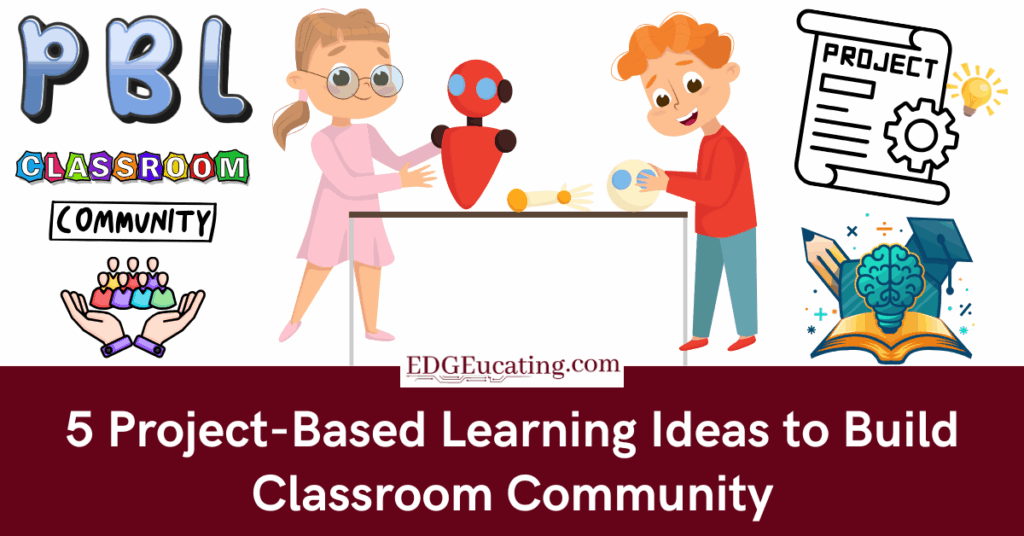The start of the school year is the perfect time to spark curiosity and build a strong classroom community. One of the best ways to do this is with project-based learning, also known as inquiry-based learning. These approaches give students the chance to collaborate, explore, and solve problems while boosting student engagement from day one.
Studies show that project-based STEM learning with educational robotics boosts students’ problem-solving competence and computational thinking skills. With the right mix of teaching strategies, hands-on tools, and creativity, you can bring STEAM education to life. Below are five easy-to-launch project ideas using popular devices like Ozobot, Merge Cube, Makey Makey, KIBO, Dash Robot, Cricut, Micro:bit, and 3Doodler. Each one is designed to help students practice problem-solving, coding, and computational thinking while also building community.
1. Kick Off with Small, Inquiry-Based Challenges
Start the year with short, low-stakes projects that let students explore and ask questions. This takes the pressure off and gives everyone a chance to succeed.
Try This: Use Ozobots, or another coding robot, to create “Classroom Welcome Tours.” Students code their bots to follow a map of the classroom, stopping at important spots like the library corner or supply shelves. It’s a fun way to practice coding for kids while helping students feel comfortable in their new space.
Check out our FREE Ozobot Playbook for more lesson ideas!
2. Design a Dream Classroom Together
When students feel they’ve had a say in their learning environment, they’re more invested. Project-based learning can turn classroom design into a powerful community project.
Try This: Have groups use the Merge Cube to build 3D models of an item within their “dream classroom.” Each group shares their vision in augmented reality, and the class votes on ideas to bring to life. This builds collaboration while practicing computational thinking and digital design.
An alternative to using the Merge Cube, for those wanting a less technical option, use Arckit to design their “dream classroom” or classroom items.
3. Build Collaboration with Technology
Robotics kits and edtech tools are great for teamwork and student engagement — especially when you assign roles like coder, builder, and tester so every student contributes.
Try This: With Makey Makey, students can create a “Classroom Community Game.” Each key press could trigger fun sounds, positive messages, or trivia about classmates. It’s a simple way to practice problem-solving while reinforcing community.
4. Blend Creativity and STEAM Education
Not every student connects first with coding or robotics. Some thrive when you combine tech with art and design.
Try This: Have students create personalized “Classroom Identity Badges.” They can cut shapes with the Cricut, decorate with the 3Doodler, and program a Micro:bit to display scrolling words like “teamwork” or “curiosity.” This lets them showcase their identity while learning hands-on skills.
5. Make Robots Part of the Classroom Culture
For younger learners, playful robotics projects help ease them into project-based teaching. Simple challenges make tech approachable while reinforcing classroom norms.
Try This: Using the KIBO or Dash Robot, students design a “Classroom Greeter.” The robot can introduce itself, share rules, or welcome visitors. This introduces coding for kids while strengthening classroom culture.
Bringing Classroom Culture Together
Launching community-focused inquiry-based projects doesn’t have to be complicated or expensive. With the right teaching strategies and tools like Ozobot, Makey Makey, Cricut, or Micro:bit, you can weave together creativity, problem-solving, and teamwork.
Check out our Digital Teaching Resources and our FREE Resources for more lesson ideas.
This fall, try projects that help students connect with each other while exploring STEAM education. By combining inquiry-based learning with coding, you’ll create a classroom where innovation and community go hand in hand while boosting student engagement.


